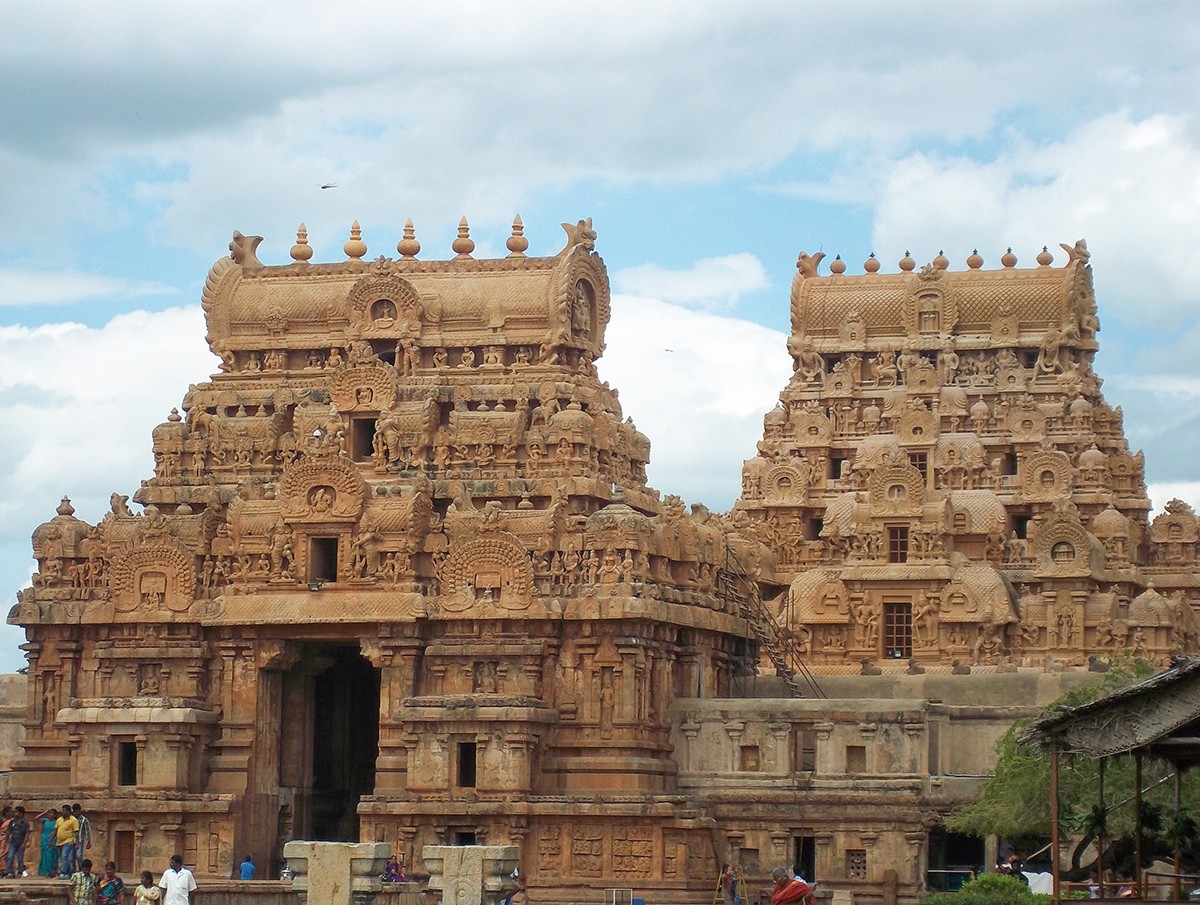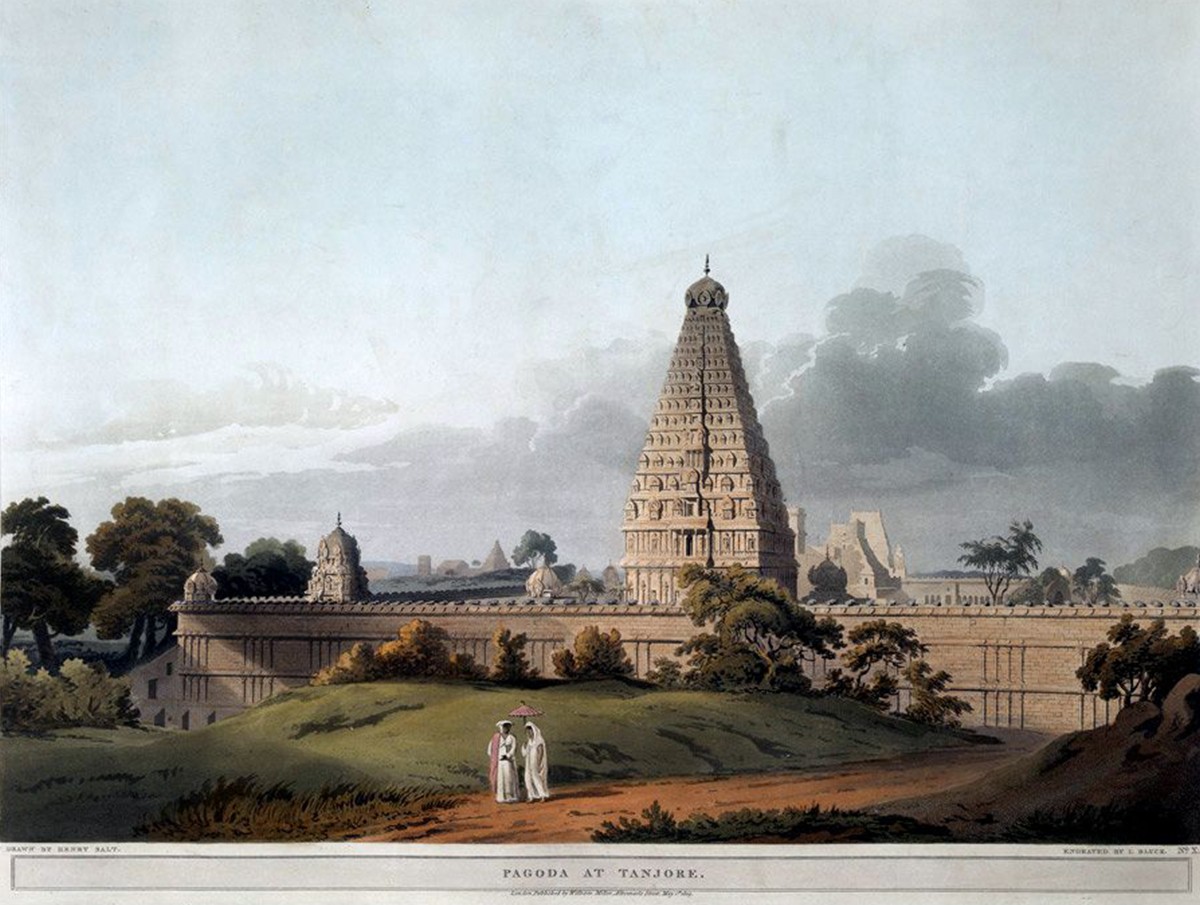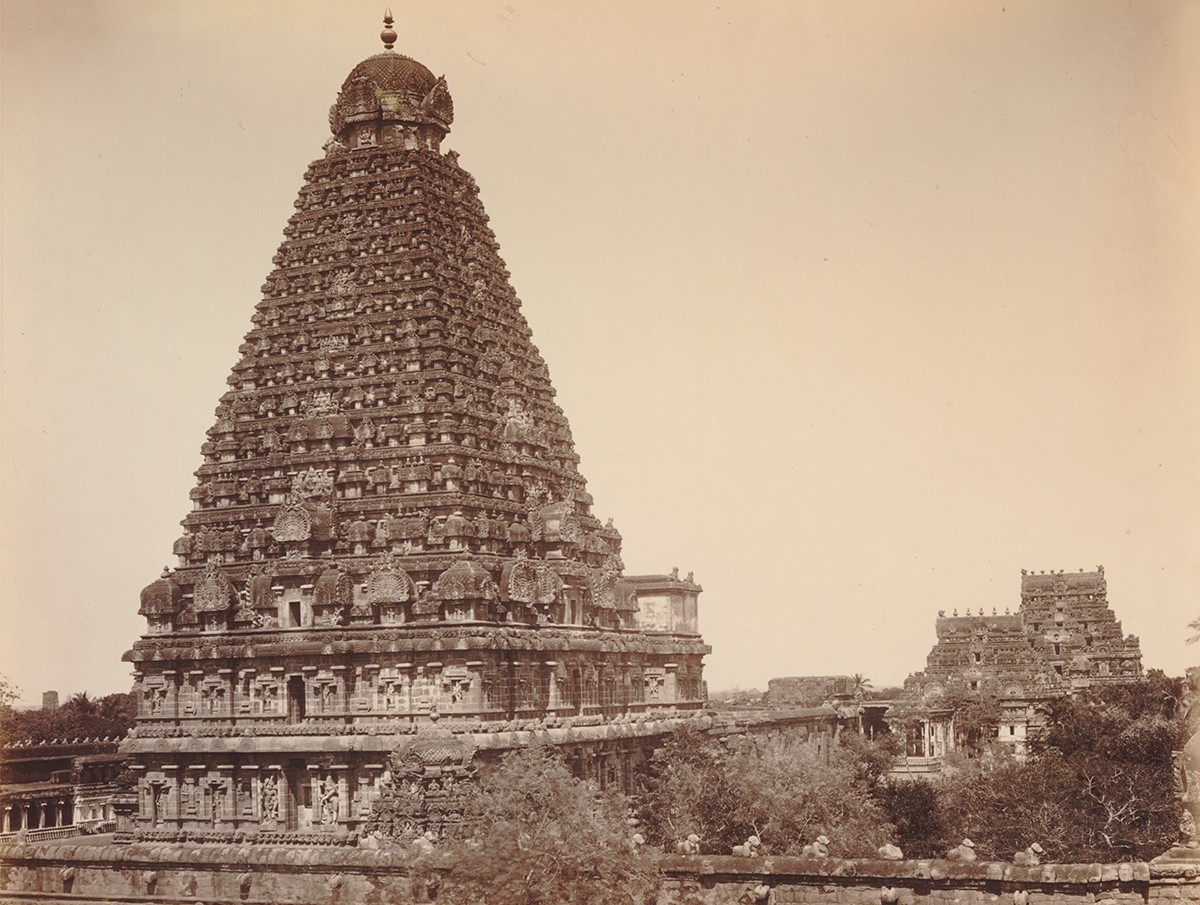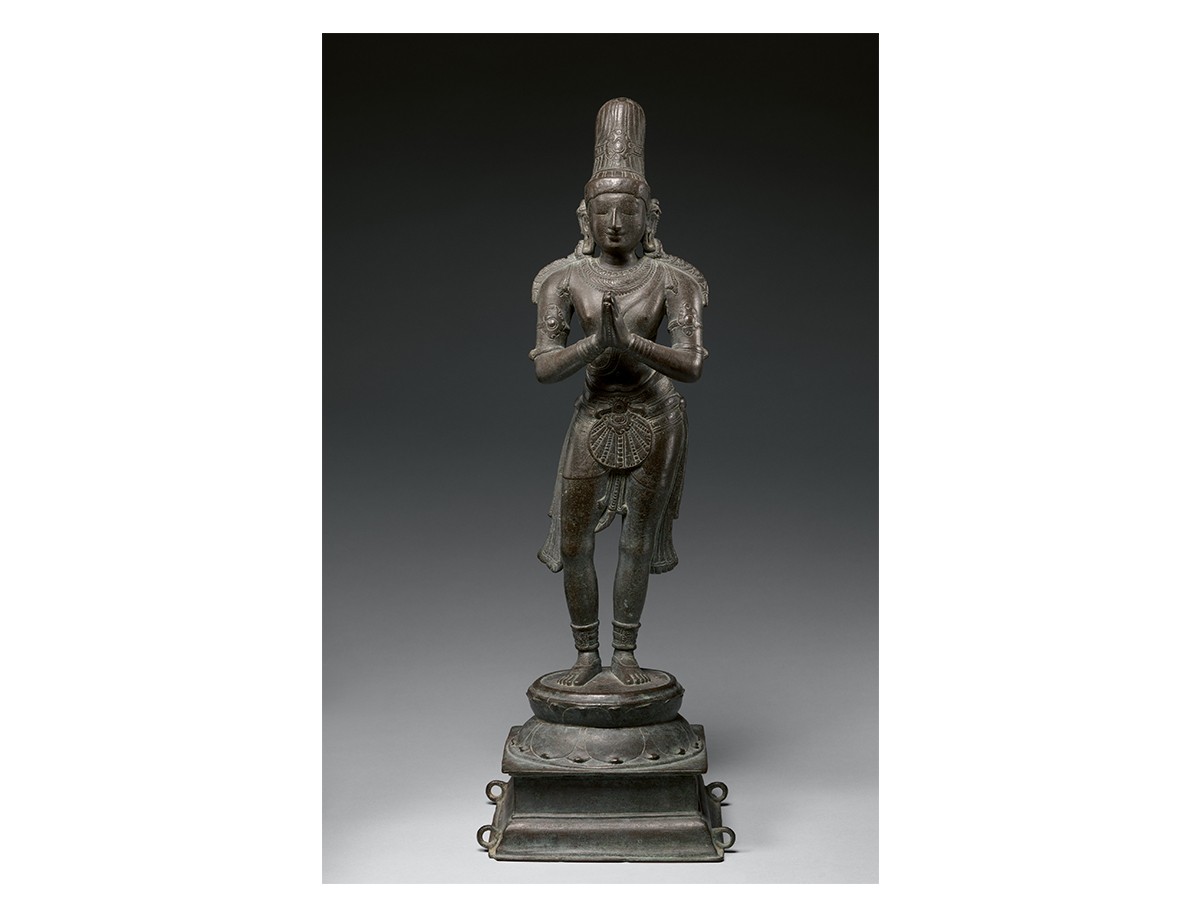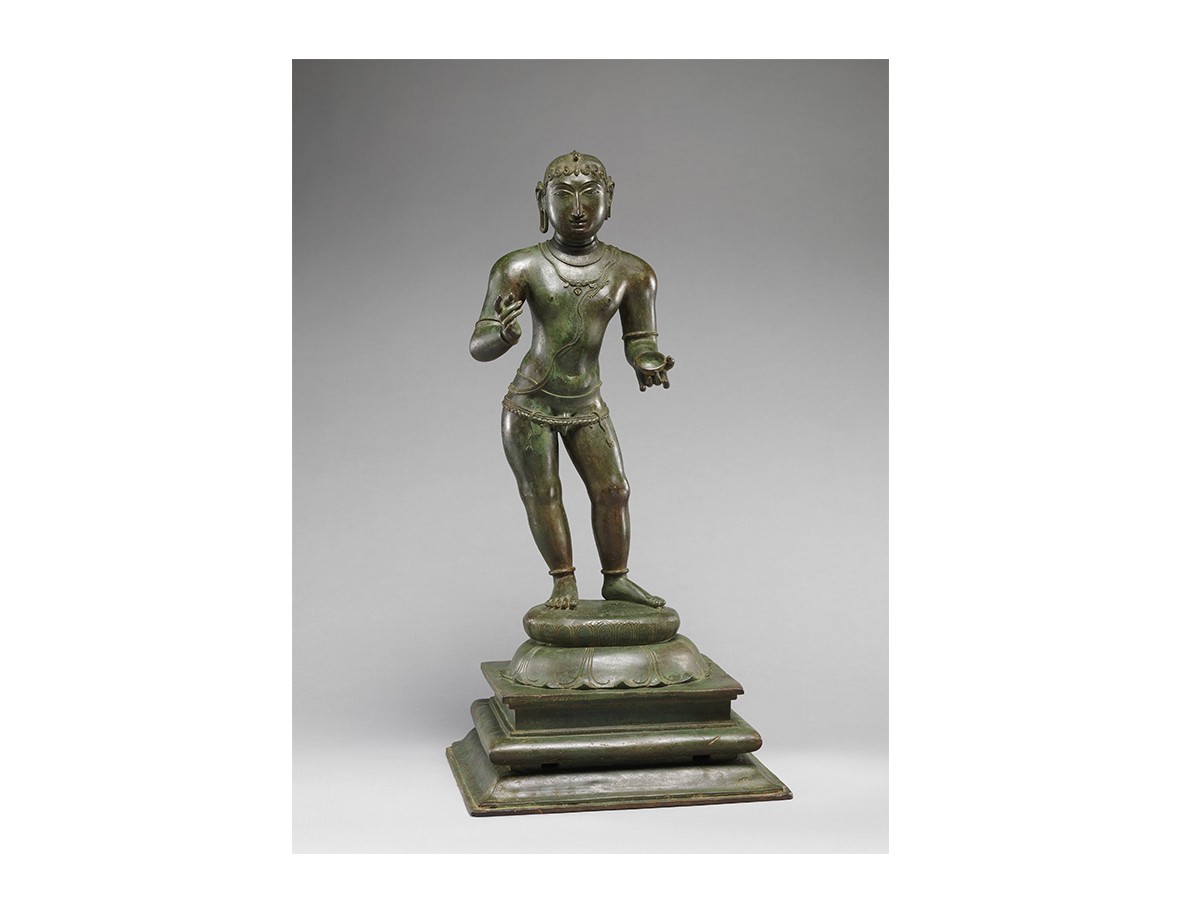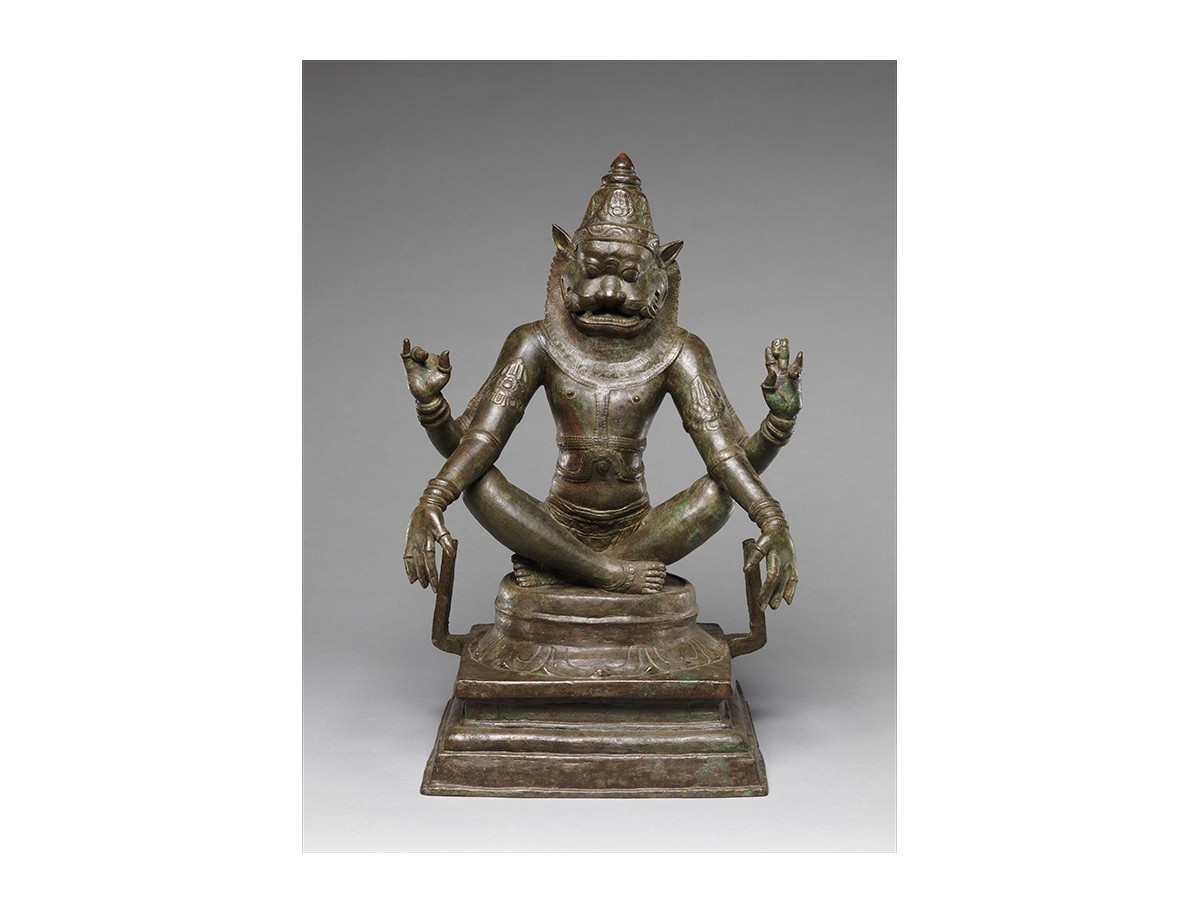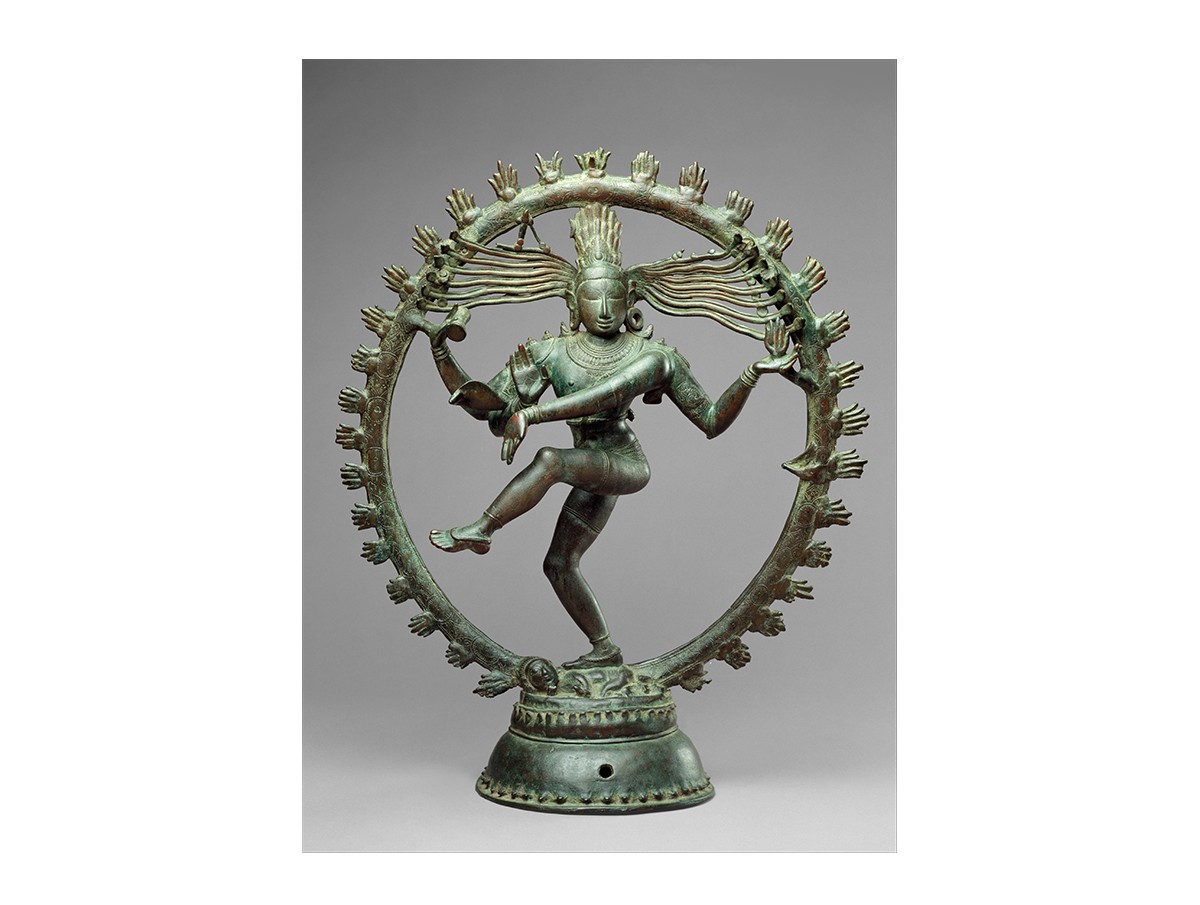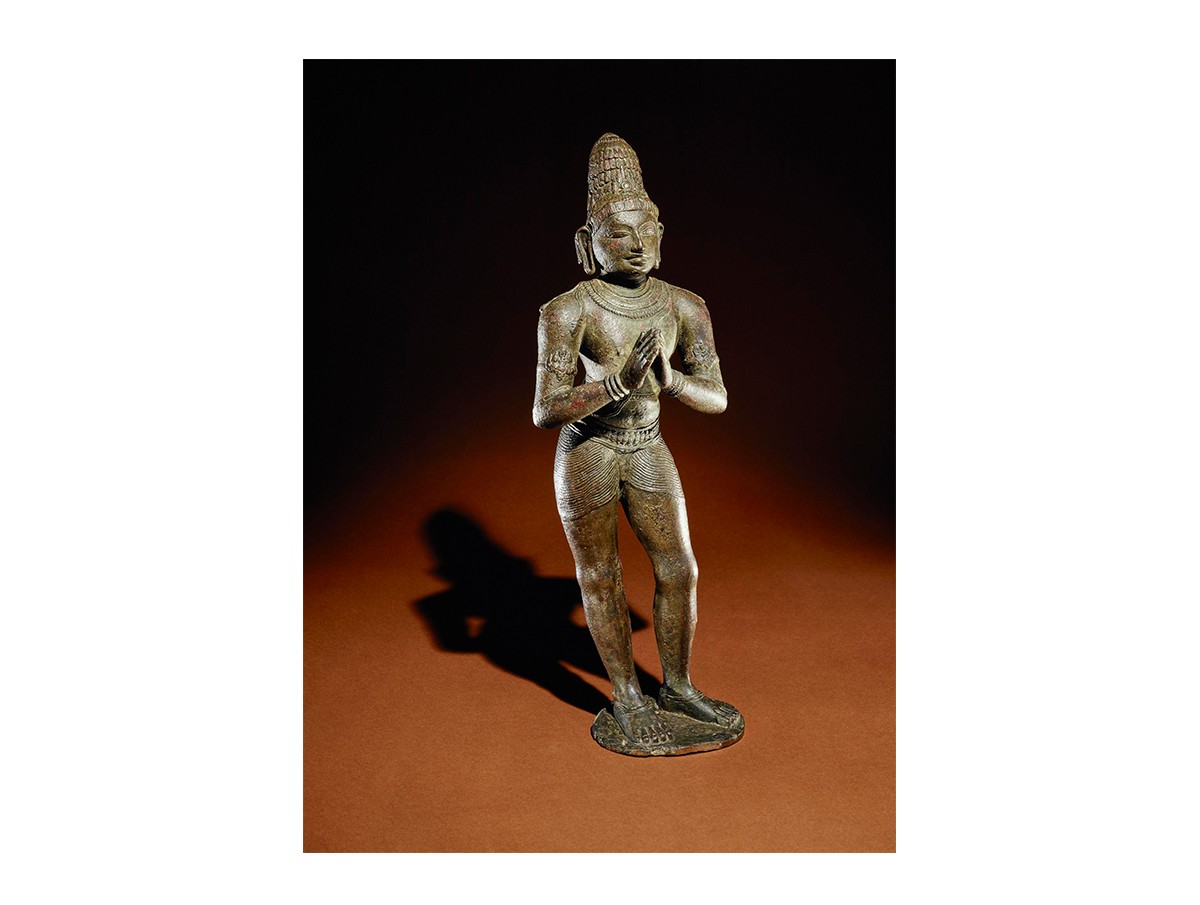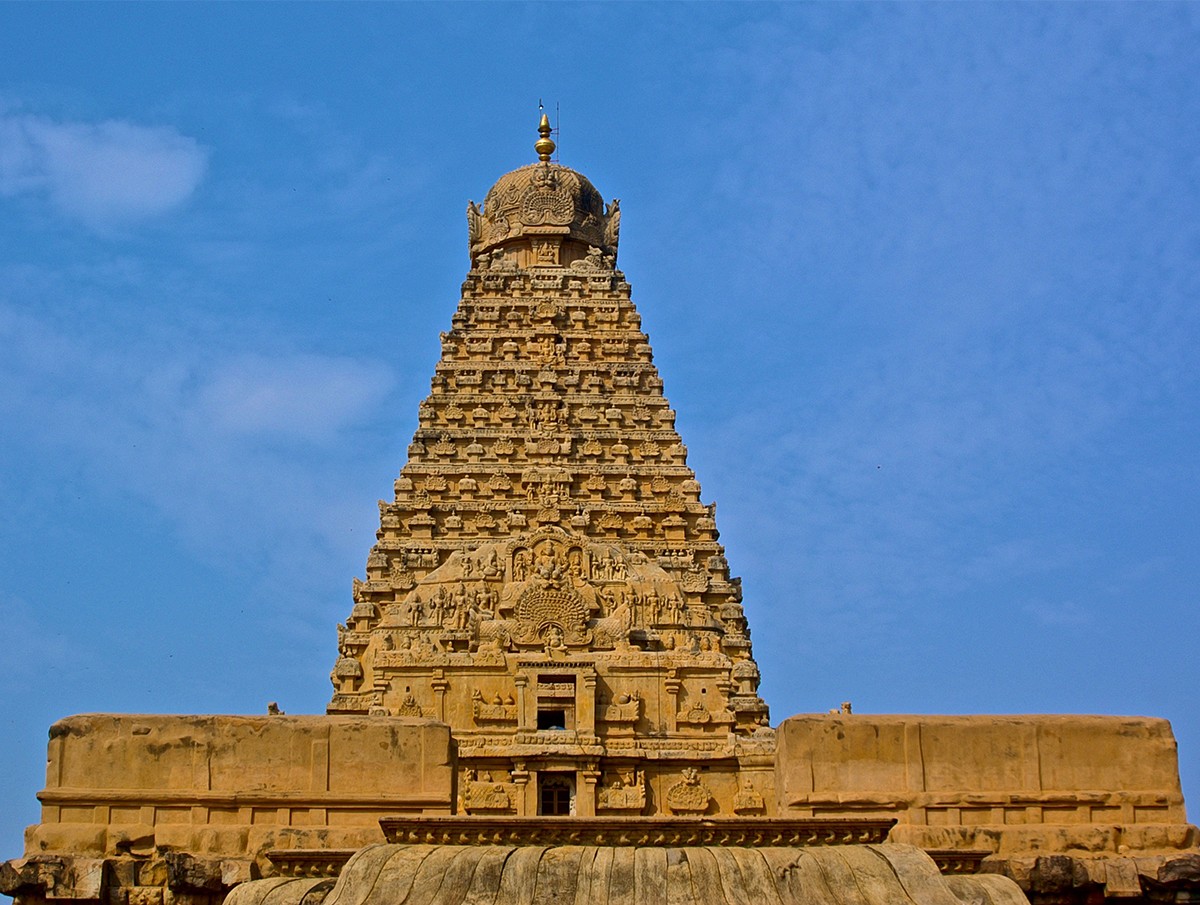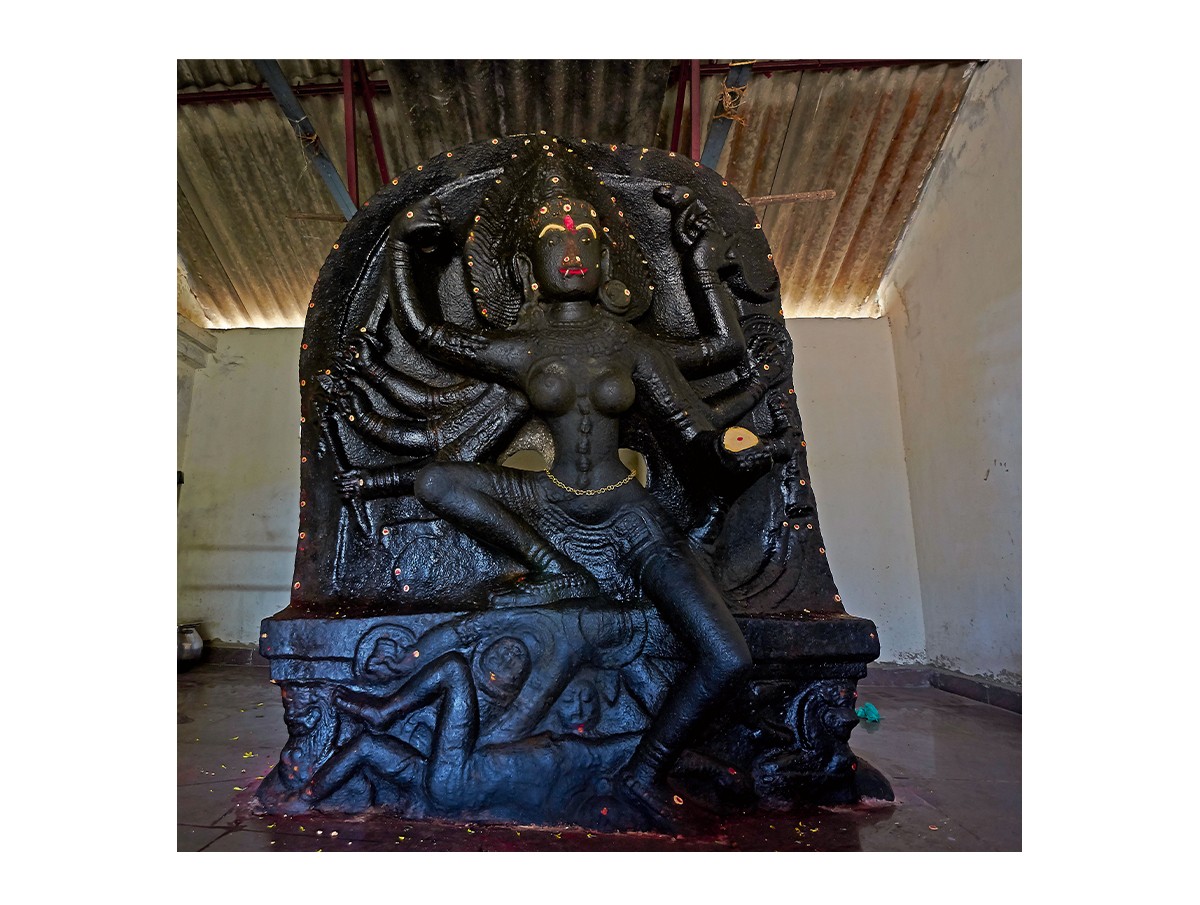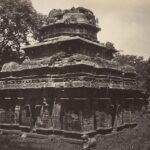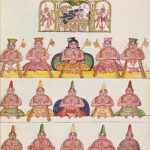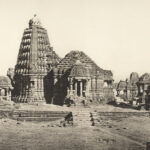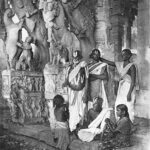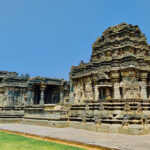New Social and Ritual Configurations in Southern India
1000–1100 CE
Chola resources and patronage lead to the emergence of influential new religious and architectural modes, exemplified in massive temple projects such as the Brihadishvara and Rajarajeshwara Temples in Thanjavur and the Gangaikondacholeshwara Temple in Gangaikondacholapuram, both in present-day Tamil Nadu. The latter also features sculptures from Kalinga and Chalukya temples, taken by the Cholas as spoils of war during conflicts with the Western Ganga and Western Chalukya dynasties in the early eleventh century.
Chola emperors seek to establish themselves as descendants of the Early Cholas, a dynasty from the Sangam period, drawing on the prestige of an imagined ‘classical’ period in Tamil literature. The Chola dynasty also commissions large numbers of bronze sculptures for temple rituals and processions. These rituals involve the canonisation of the bhakti saints of earlier centuries, as well as an expanded role for Agamic temple worship. Stylistically, Chola bronzes follow regional traditions, with a highly refined sense of movement and elegant, stylised figures.
Bibliography
Dehejia, Vidya. Indian Art. New York: Phaidon Press, 2012.
Harle, J. C. The Art and Architecture of the Indian Subcontinent. New Haven: Yale University Press, 1994.
Huntington, Susan. The Art of Ancient India: Buddhist, Hindu, Jain. New Delhi: Motilal Banarsidass Publishers, 2016.
Kaimal, Padma. “Early Cōḻa Kings and ‘Early Cōḻa Temples’: Art and the Evolution of Kingship.” Artibus Asiae, 56 nos. 1/2 (1996). http://www.jstor.org/stable/3250104.
Feedback 
This entry appears in
Art in South Asia
Visit Timeline
Associated Timeline Events
First Published: March 11, 2024
Last Updated: August 5, 2024



